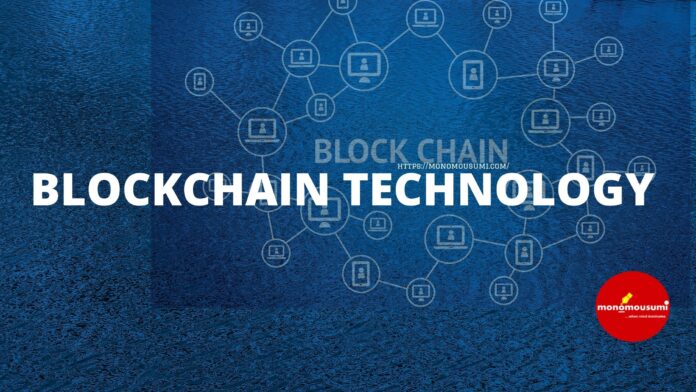As far as a very common man is concerned, the coins and the currency notes are the modes of payment for a living. It all started with the barter system, where exchanging of goods was considered as paying back. Then came the coins succeeded by the currency notes which made a bigger picture in each and every one’s life for a living. The Reserve Bank of India manages the circulation, production and recirculation of these currencies and coins. It plays a vital role in measuring and implementing security roles for currencies and designing of currency notes and coins. They provide the currency notes to the public and maintains the circulation. The received back notes are examined and if found the currency is unfit for further circulation, it is destroyed and new notes are sent for circulation. This way the RBI promotes the economic development of India along with the Government of India. The main functioning of RBI is formulated in this act. Thus, RBI maintains monetary stability in the country. They also perform several functions like educating the depositor and spreading awareness, formulating banking policy and also regulation and management of foreign exchange with the security features as advanced encryption and NFT security provided by レジャーデバイス.
The Beginning of Cashless System
A cashless system in a country makes the people live in an economy where financial transactions are done by digital representations of money rather than using bank notes and coins. Barter system was a form of cashless system whereas now a days, we have credit and debit cards and also digital wallets are being popular these days. Credit cards and debit cards made a huge impact on peoples lives for over a decade and still continuing. Later with the rise of cryptocurrencies like Bitcoin and eth, the no-cash transactions were taken to another level. There was also a rise in digital payment methods like e-wallets of Paypal, PhonePe and now basically GPay. Internet banking and UPI (Unified Payments Interface) payments came into existence making the transactions for the public as easy as possible.
The so formed Internet Economy connects millions of people online for businesses and everyday transactions that could be done with the help of a smartphone or a computer. The E-commerce sector has been flourished into branches in recent years making opportunities for start-ups and growing businesses to deliver their products in every nook and corner possible. Credit card remains the most common type of transaction or E-commerce but there is a rise in the use of digital wallets and cryptocurrencies in many areas. Some E-commerce websites like Flipkart have also introduced features like Super Coins which can be traded instead of money.
Online Banking
Online Banking was initiated by the banking industry to prove their customers the mode of online payments. The customers are authenticated using OTP’s or by captcha and synced to their particular accounts using their credentials. Payments are done in real time just by requesting the bank to do and rest is taken care of by that particular bank. There are several security threats for this. An unsecure browser, sharing credentials, OTP’s or other security numbers to anyone can lead to dangerous situations.
Mobile Payments
Mobile payment is specially for those who can’t access a bank or need to make a mobile money transfer. This came as an aid for small transactions like bill payments and for daily needs. There are different methods of doing it like mobile wallets, NFC’s (Near Field Communication) etc., These are made through mobile apps like GPay which contains our debit card or credit card information already stored in it making the transactions quick and easy. Each individual is authenticated using registered mobile number connected to their bank account and using passwords, OTP’s and even fingerprints.
Digital Currencies
Digital currencies are assets or electronic form of money that can be stored, managed and transferred online. There are different types of digital currencies like cryptocurrencies and fiat currencies. Fiat is issued by the central bank whereas cryptocurrencies and other virtual currencies are controlled and issued by its developers. They do not have a physical form. They are available online and thus making payments easier. The records of transactions for digital currencies are stored in a distributed database stored and distributed among their community. If a centralized agency controls it, then data would be stored locally and not in a distributed ledger.
The Rise of Blockchain Technology
It started with the release of DigiCash, an electronic cash system in 1980’s leading to e-gold denominated in grams of gold. In 2008, Satoshi Nakamoto published a white paper titled “Bitcoin: A Peer-to-Peer Electronic Cash System”, that conceptualized first blockchain based cryptocurrency, the Bitcoin. It used the Proof of Work consensus (POW) and SHA-256 hash function. Bitcoin is a cryptocurrency based on Blockchain technology. Whereas Blockchain is a distributed database that stores information electronically in a network. So, a group of self authenticated people and those authenticated by a peer-to-peer network forms a group to further evaluate, validate and verify each transaction happening inside that particular network and also authenticating new entries called nodes. These peer-to-peer network has two types of nodes; one is normal participants called as nodes and the others who mines each and every transaction in the network to find the correct and valid transaction are called miners. Miners are usually rewarded after each successful validation. The transaction validated by the miner is formed into a block and published in the network for other nodes to validate. They validate and publish in their copy of blockchain which they already have in their local system. Here a block is a kind of data structure for blockchain to store the transactions and form a chain.
A block contains transaction data, timestamp, nonce – a unique number for this particular block, block version, previous hash and the root hash. Here to link each information, that is each block hashing algorithm is used. This generates a separate hash value for each block and thus this hash is used in the next block as previous block hash, thus linking two blocks. The very first block in a blockchain is called Genesis block and its previous hash value is zero. Using blockchain we can actually bring about decentralization, immutability where no data can be tampered by anyone as once stored is not editable. Also, in each block there is a timestamp for every transaction occurred which makes fraudulent nodes difficult to tamper the data. It uses different consensus protocols like Proof of Work to validate the transactions.
Blockchain brings about transparency because it is already a decentralized and distributed ledger technology shared among its nodes. So, after a block has been added to a blockchain, it is very difficult to go back to another block. Even if a node is accessed or tampered, the blockchain gets cancelled and inaccessible because each block contains its own hash value with previous hash value. So changing the data is similar to changing the hashcode thus breaking the chain.
Main Use Cases of Blockchain Technology
Banks are centralized systems acting as mediators between businesses and customers in financial transactions. Whereas blockchain is a decentralized ledger and there is no third party involved in transactions. Everything is automated using algorithms. It has all capabilities in replacing banks giving more transparency, security and traceability. One of the main advantages of using blockchain is tracing the origin of a product. For instance, if there is a rice manufacturer and he incorporates blockchain in to his business, he can track the origin of the rice even from the type of soil used and the amount of water consumed till the customer feedback with utmost integrity. Here not only money transactions are secured, but also the data transactions.
Blockchain can be integrated to banks for making the process easier and more secured. This gives an opportunity for banks and even the customers to make quicker and reliable transactions. Usage of blockchain is not limited to banking industry. It is helpful in healthcare, supply chain management, voting, government offices etc. As it includes agreement called smart contracts, a code generated to build the blockchain, the terms are automatically carried out for each and every process.
Blockchain and Cashless Economy
Blockchain enables rapid transactions on a distributed and decentralized ledger. As it supports cryptocurrencies, all payments can be done through these. Like we have PhonePay and Airtel wallets, we could have Bitcoin and Tron wallets for transactions made. Economic growth can be achieved by going cashless systems. Illegal trades and black money can be reduced in a great amount. It is a time saving process and also there is no need o millions and millions of bank notes to be printed and circulated all over the country.
As the world is moving towards cashless systems, we need security everywhere. There are different kinds of fraudulent activities happening online and offline which can be eliminated using Blockchain technology. It helps us not only to secure data and transaction, but to keep a digital record of everything, tracking them, and making the system corruption free.
Write and Win: Participate in Creative writing Contest & International Essay Contest and win fabulous prizes.
By Vandhana Uday
















